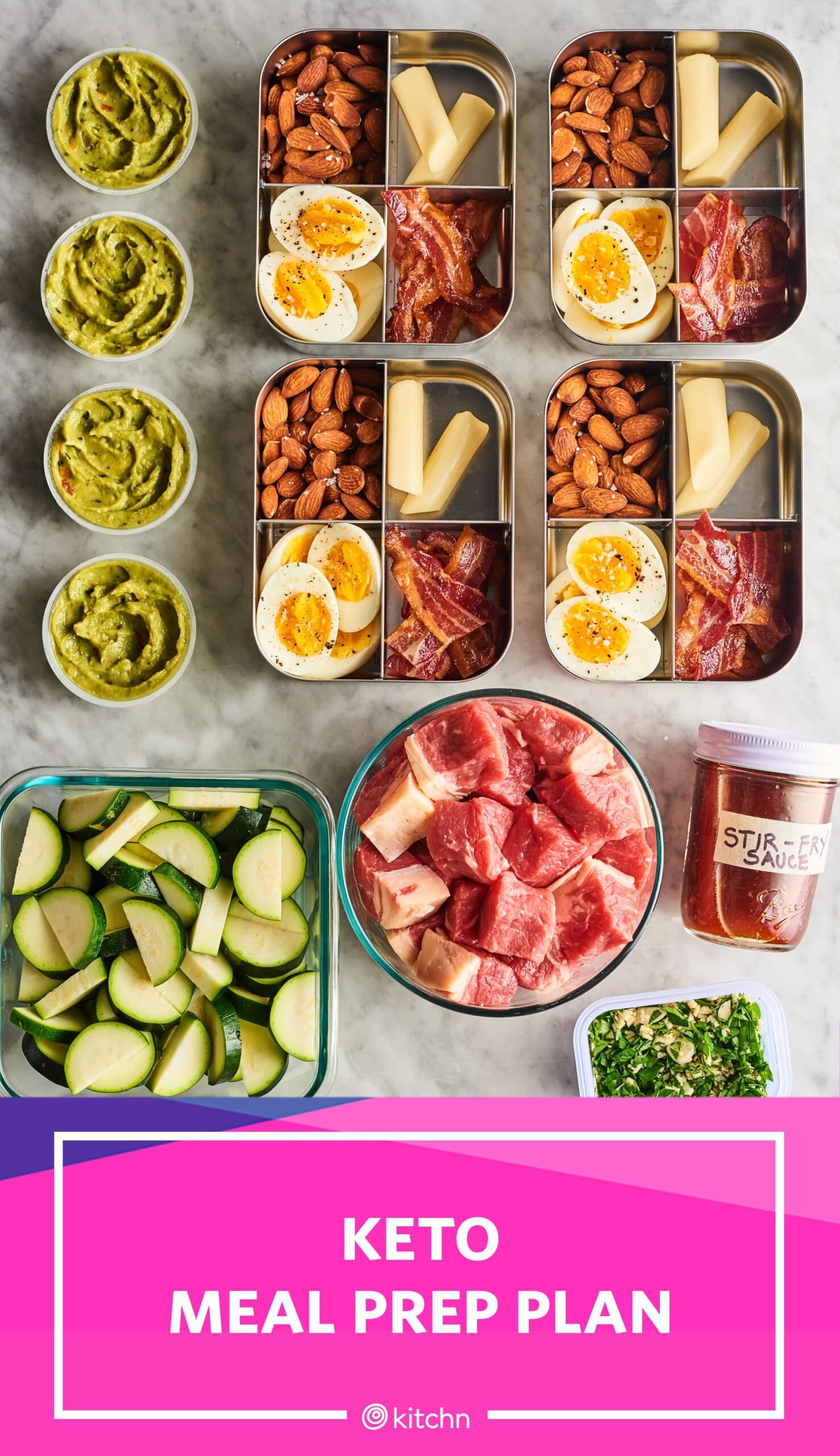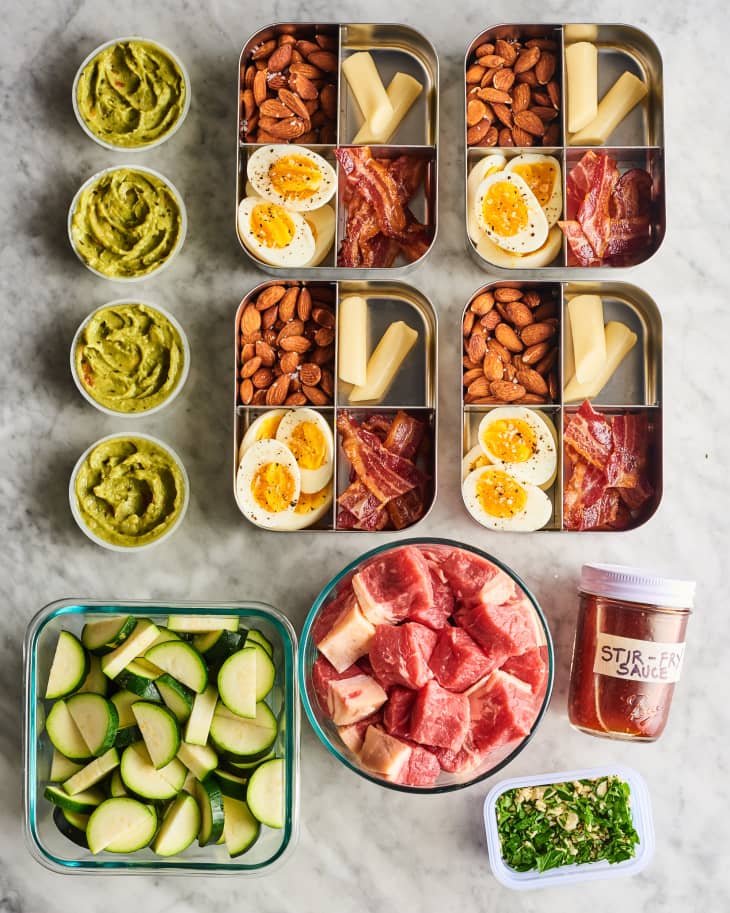Are you tired of constantly searching for Keto-friendly recipes and feeling overwhelmed with meal planning? Look no further! This article will provide you with the essential ingredients needed for successful Keto meal planning. By incorporating these ingredients into your weekly meal plan, you will not only simplify your grocery shopping, but also ensure that you are getting all the necessary nutrients to maintain a healthy and delicious Keto lifestyle. Stay tuned to discover the key elements that will make your Keto meal planning a breeze.
1. Understanding the Keto Diet
What is the Keto Diet?
The Keto Diet, short for the ketogenic diet, is a low-carb, high-fat diet that has gained popularity for its potential weight loss benefits. The main goal of the Keto Diet is to put your body into a metabolic state called ketosis, where it relies on fat for fuel instead of carbohydrates. By drastically reducing your carbohydrate intake and increasing your consumption of healthy fats, your body will enter ketosis and start burning stored fat for energy.
How does the Keto Diet work?
The Keto Diet works by depriving your body of carbohydrates, which are typically its primary source of fuel. When you consume fewer carbs, your body begins to convert fat into ketones, molecules that serve as an alternative energy source. This transition from using glucose from carbohydrates to using fat for energy helps you burn stored fat more efficiently, leading to weight loss. Additionally, the increase in fat consumption helps you feel satiated and reduces cravings, making it easier to adhere to a calorie deficit.
Benefits of the Keto Diet
The Keto Diet offers several benefits beyond weight loss. Many individuals who follow this diet report increased mental clarity and focus, as ketones provide a more stable energy source for the brain. Additionally, the Keto Diet may help regulate blood sugar levels, improve heart health, and reduce inflammation. Research suggests that it may even have therapeutic effects for certain medical conditions, such as epilepsy and polycystic ovary syndrome (PCOS). However, it’s important to consult with a healthcare professional before starting any new diet or making significant dietary changes.
2. Setting Clear Goals
Define your weight loss goals
Before starting the Keto Diet, it’s important to clearly define your weight loss goals. Whether you want to lose a certain number of pounds or fit into a specific clothing size, having a specific goal in mind will help you stay motivated and track your progress. When setting your weight loss goals, make sure they are realistic and achievable. It’s also helpful to set smaller milestones along the way to celebrate your progress and stay motivated.
Identify your nutritional needs
To ensure you’re meeting your nutritional needs while on the Keto Diet, it’s crucial to identify your specific requirements. This includes determining your daily calorie intake, as well as understanding the ideal macronutrient ratios for the Keto Diet. Typically, the Keto Diet consists of consuming approximately 70-75% of your calories from fat, 20-25% from protein, and 5-10% from carbohydrates. However, these ratios may vary depending on your individual needs and goals. Consulting with a registered dietitian can help you determine the best macronutrient distribution for your specific circumstances.
Consider any dietary restrictions or allergies
In addition to setting weight loss goals and identifying your nutritional needs, it’s essential to consider any dietary restrictions or allergies you may have. While the Keto Diet is highly flexible and can accommodate various dietary preferences, some individuals may need to make modifications to ensure they’re adhering to their restrictions. For example, if you’re lactose intolerant, you may need to choose dairy-free sources of fat and protein. Similarly, if you have allergies to certain fruits or vegetables, you can find suitable alternatives that align with the Keto Diet. Being mindful of your dietary restrictions will help you plan meals that meet your needs and preferences.
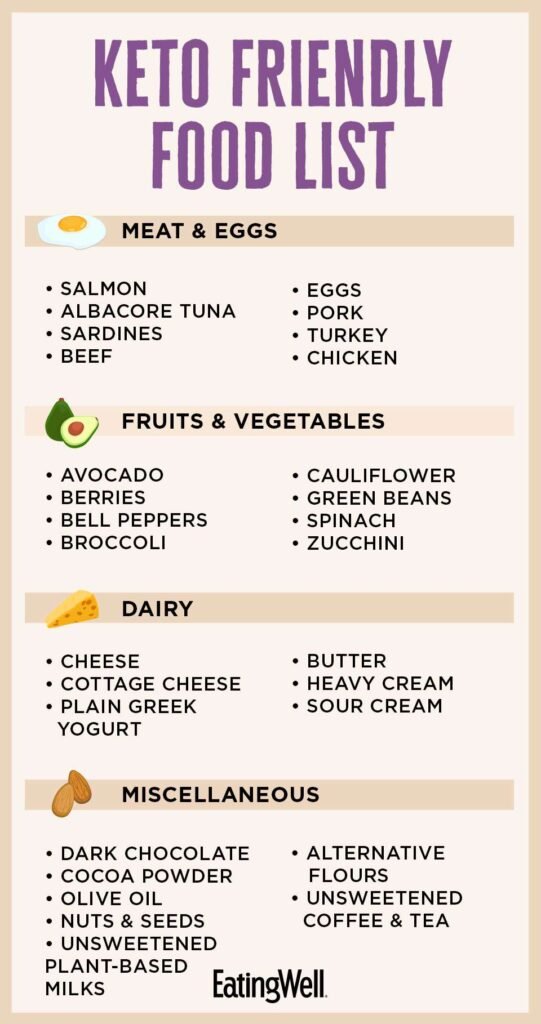
This image is property of www.eatingwell.com.
3. Creating a Keto-Friendly Grocery List
Stock up on healthy fats
One of the key components of the Keto Diet is consuming ample healthy fats. This includes foods such as avocados, olive oil, coconut oil, nuts, and seeds. These fats not only provide the energy your body needs while on the Keto Diet, but they also keep you feeling satisfied and full. When creating your Keto-friendly grocery list, be sure to include a variety of healthy fats to incorporate into your meals and snacks.
Choose high-protein options
Protein is an essential nutrient that helps support muscle growth and repair, as well as keeps you feeling full between meals. When selecting protein sources for your Keto Diet, opt for high-quality options like lean meats, poultry, fish, and eggs. Additionally, including plant-based protein sources such as tofu, tempeh, and seitan can add variety to your meals. Look for organic and grass-fed options whenever possible to ensure you’re getting the best quality protein.
Include low-carb vegetables and fruits
While the Keto Diet restricts carbohydrate intake, there are still plenty of low-carb vegetables and fruits you can enjoy. Vegetables such as leafy greens, broccoli, cauliflower, zucchini, and bell peppers are excellent choices as they are low in carbs and high in essential nutrients. For fruits, focus on berries like strawberries, raspberries, and blueberries, which are lower in sugar compared to other fruits. By including these low-carb options in your grocery list, you can add variety and essential nutrients to your meals.
Pick keto-friendly snacks and treats
Snacking can be a part of a successful Keto Diet if you choose the right options. Look for snacks that are high in fat and low in carbs, such as cheese, olives, nuts, and seeds. Dark chocolate with a high cocoa percentage can also be enjoyed in moderation. Avoid snacks and treats that are high in added sugars or carbohydrates, as they can quickly derail your progress on the Keto Diet. Be sure to read nutrition labels carefully and make mindful choices when selecting snacks and treats.
4. Meal Prepping for Success
Plan your meals in advance
Meal prepping is a valuable tool for success on the Keto Diet. By planning your meals in advance, you can ensure you have all the necessary ingredients on hand and can avoid making impulsive, unhealthy food choices. Consider dedicating a specific day each week to meal planning and grocery shopping. Look for recipes that align with the Keto Diet and create a meal plan for the upcoming week. This will save you time and stress during busy weekdays and help you stick to your diet.
Batch cook and portion meals
To make meal prepping even more efficient, try batch cooking and portioning your meals. Cook larger quantities of food and divide them into individual portions that you can refrigerate or freeze for later use. This way, you’ll always have a healthy, Keto-friendly meal ready whenever you need it. Investing in appropriate storage containers, such as glass or BPA-free plastic, will help you keep your meals fresh and organized.
Use meal prep containers
Using meal prep containers can make portioning and organizing your meals even easier. Look for containers with separate compartments, which allow you to keep different components of your meals separate. This is particularly useful when meal prepping salads or bento-style meals. Additionally, choose containers that are microwave and dishwasher-safe to make reheating and cleaning stress-free.
Label and organize your meals
To streamline your meal prepping process, make sure to label and organize your meals properly. Clearly mark each container with the contents and the date it was prepared. This will prevent any confusion and allow you to grab the desired meal easily. Consider using color-coded labels or assigning specific shelves or sections in your refrigerator and pantry for your Keto meals. By staying organized, you’ll save time and ensure your meals are prepared and consumed in a timely manner.
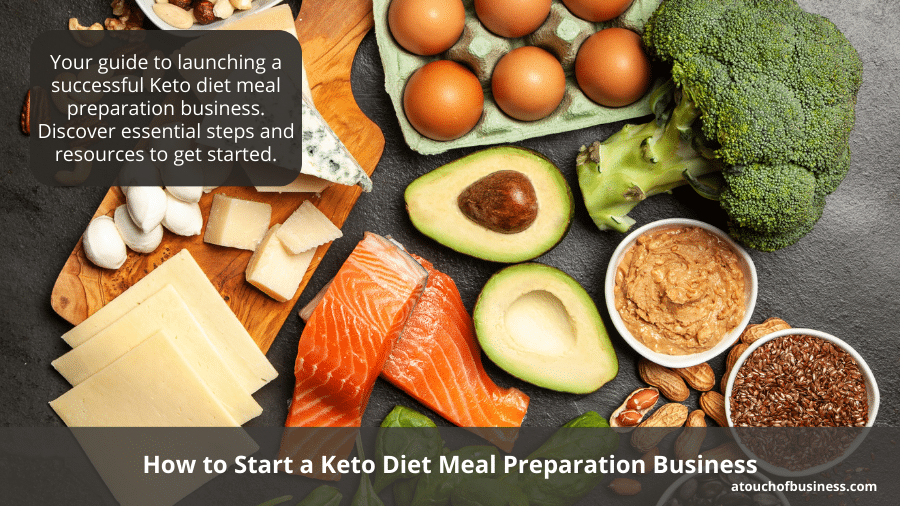
This image is property of atouchofbusiness.com.
5. Incorporating Variety and Flavor
Experiment with different proteins
To keep your Keto Diet exciting and enjoyable, experiment with different protein sources. Beyond the traditional chicken and beef, try incorporating seafood like salmon, shrimp, or scallops into your meals. Consider vegetarian or plant-based protein options such as tofu, tempeh, and seitan for a change of pace. Don’t be afraid to get creative and try new recipes that feature different protein sources. This will prevent mealtime boredom and help you meet your nutritional needs.
Try new low-carb vegetables and fruits
While it’s essential to include low-carb vegetables and fruits on the Keto Diet, that doesn’t mean you have to stick to the same few options. Challenge yourself to try new vegetables and fruits that are low in carbs and packed with nutrients. For example, experiment with spaghetti squash as a substitute for pasta or try using cauliflower rice as a base for stir-fries. Consider adding radishes, jicama, or kohlrabi to salads for an interesting twist. By incorporating variety into your diet, you’ll enjoy different flavors and maximize your nutrient intake.
Use herbs, spices, and seasonings
Enhance the flavor of your Keto meals by using herbs, spices, and seasonings. These additions can make even the simplest dishes taste more exciting and satisfying. Experiment with herbs like basil, cilantro, rosemary, and thyme to add a burst of freshness to your meals. Spices such as turmeric, cumin, paprika, and cinnamon can add depth and warmth to your dishes. Don’t forget to include keto-friendly seasonings like salt, pepper, and garlic powder, which can elevate the taste of any meal.
Find keto-friendly alternatives to favorite dishes
One of the challenges of the Keto Diet is finding alternatives to your favorite high-carb dishes. Fortunately, there are numerous keto-friendly substitutes available that can satisfy your cravings. For example, you can replace traditional pasta with zucchini noodles or spaghetti squash. Swap out white rice for cauliflower rice or steamed broccoli. Use lettuce wraps or cabbage leaves instead of tortillas or bread for sandwiches or wraps. Get creative and explore the wide range of keto-friendly recipes and alternatives available online to enjoy your favorite dishes in a healthier way.
6. Tracking Macros and Nutrients
Understanding macronutrient ratios
Tracking your macronutrient intake is an essential aspect of the Keto Diet. To ensure you’re staying within the appropriate range of fat, protein, and carbohydrate consumption, it’s crucial to understand the macronutrient ratios recommended for the diet. As mentioned earlier, the general guideline for the Keto Diet is approximately 70-75% of calories from fat, 20-25% from protein, and 5-10% from carbohydrates. Keeping track of your macros will help you maintain ketosis and achieve your desired results.
Using tracking apps and tools
To make tracking your macros and nutrients more convenient, consider utilizing tracking apps and tools. These digital resources can help you monitor your daily food intake, calculate macronutrient ratios, and provide insights into your overall nutrient consumption. Some popular apps include MyFitnessPal, Carb Manager, and Cronometer. Explore different options and find one that suits your preferences and integrates well with your lifestyle.
Monitoring daily carbohydrate intake
Carbohydrate intake is particularly important to monitor during the Keto Diet, as it needs to be minimized to maintain ketosis. By keeping a close eye on your carbohydrate intake, you can ensure that you’re within the recommended range and not accidentally consuming hidden carbs. Pay attention to nutrition labels, especially for packaged foods, and avoid foods with high carbohydrate content. Monitoring your daily carbohydrate intake will help you stay on track and remain in ketosis.
Tracking other essential nutrients
While monitoring your macronutrient intake is crucial on the Keto Diet, it’s also essential to ensure you’re getting enough other essential nutrients. Focus on consuming a variety of nutrient-dense foods that provide vitamins, minerals, and antioxidants. Incorporate foods like leafy greens, colorful vegetables, and berries to maximize your nutrient intake. Additionally, consider taking a high-quality multivitamin or specific supplements recommended by your healthcare provider to fill any nutritional gaps.
This image is property of cdn.apartmenttherapy.info.
7. Staying Hydrated
Importance of staying hydrated on the Keto Diet
Staying hydrated is important for overall health, but it holds particular significance on the Keto Diet. In the initial stages of the diet, your body sheds a significant amount of water weight due to the reduction in carbohydrate intake. This makes it crucial to replenish fluids and maintain proper hydration levels. Adequate hydration supports various bodily functions, including digestion, metabolism, and overall well-being.
Recommended water intake
While the recommended daily water intake may vary depending on factors such as your body size, activity level, and climate, a general guideline is to aim for at least eight glasses of water per day. However, on the Keto Diet, your water needs may increase due to the diuretic effect of ketosis. It’s essential to listen to your body and drink enough water to stay properly hydrated. You may also need to increase your water intake if you engage in intense physical activity or live in a hot climate.
Incorporating low-carb beverages
In addition to water, you can incorporate various low-carb beverages into your daily routine to stay hydrated. Unsweetened herbal teas, black coffee, and sparkling water are excellent options that won’t interfere with ketosis. Be cautious with fruit juices and sodas, even if they claim to be low in sugar, as they often contain hidden carbs. It’s always best to read labels carefully and opt for natural, sugar-free options when choosing beverages.
8. Overcoming Challenges and Staying Motivated
Dealing with keto flu symptoms
When transitioning to the Keto Diet, some individuals experience a set of symptoms known as the keto flu. These symptoms can include fatigue, headache, nausea, dizziness, and irritability. The keto flu is a result of the body adapting to using fat for fuel instead of carbohydrates. To alleviate these symptoms, it’s important to stay hydrated, ensure adequate electrolyte intake, and gradually decrease carbohydrate consumption instead of eliminating them abruptly. The keto flu is temporary and usually subsides within a week or two as your body adjusts to the new dietary pattern.
Resisting temptation and cravings
Like any dietary change, the Keto Diet may come with its fair share of temptations and cravings. It’s important to acknowledge and address these challenges to stay on track with your goals. Planning and preparing meals in advance can help minimize impulsive food choices and reduce the likelihood of giving in to cravings. Finding healthier alternatives to satisfy your cravings, such as keto-friendly desserts or snacks, can also help curb your sweet or salty tooth. Remember, consistency is key, and staying motivated will ultimately lead to long-term success on the Keto Diet.
Finding support and accountability
Embarking on the Keto Diet can be more enjoyable and sustainable when you have a support system in place. Seek out friends, family members, or coworkers who are also interested in the Keto Diet or who can provide support and encouragement along the way. Additionally, joining online communities or forums dedicated to the Keto Diet can help you connect with like-minded individuals, share experiences, and gain inspiration. Having someone to share your journey with and hold you accountable can increase your chances of success.
Celebrating milestones and achievements
As you progress on your Keto Diet journey, it’s important to celebrate milestones and achievements along the way. Whether it’s losing a certain amount of weight, fitting into a smaller clothing size, or reaching a personal fitness goal, acknowledging your progress will help you stay motivated and focused. Treat yourself to non-food rewards, such as a new workout outfit or a spa day, to celebrate your achievements. Remember that every step forward is a step closer to your ultimate goal.
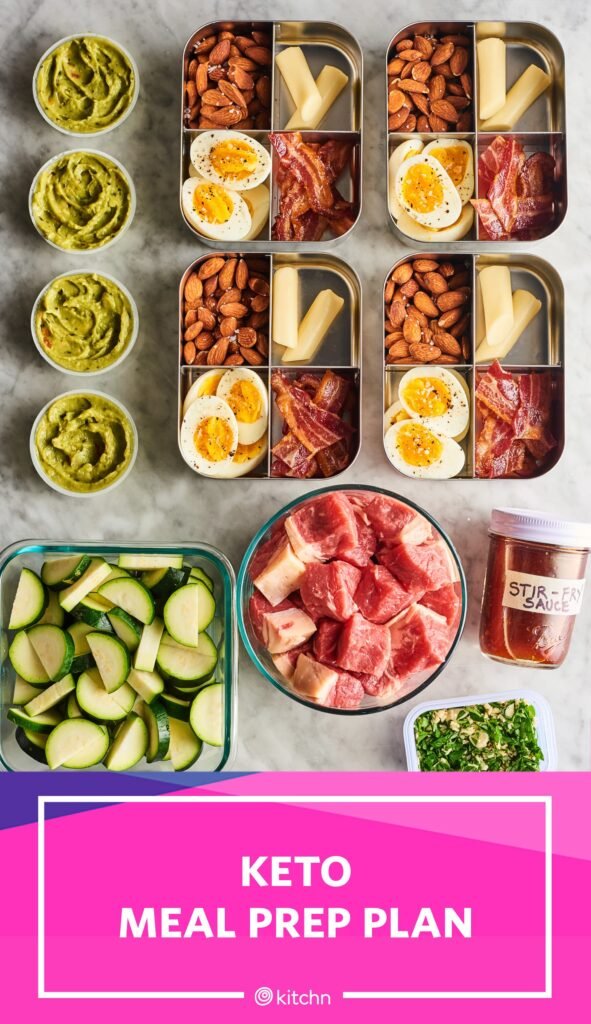
This image is property of cdn.apartmenttherapy.info.
9. Planning for Dining Out and Social Events
Researching keto-friendly restaurants
Dining out while on the Keto Diet may seem challenging, but with some research and preparation, you can find keto-friendly options at most restaurants. Before heading out to a restaurant, take some time to browse their menu online. Look for dishes that are naturally low in carbs or can be modified to fit your dietary needs. For example, choose grilled protein options with vegetable sides, request dressings and sauces on the side, and substitute high-carb sides like potatoes or rice with extra vegetables.
Making smart choices when dining out
When dining out, it’s essential to make smart choices that align with your Keto Diet goals. Opt for grilled, baked, or steamed options instead of breaded or fried dishes. Choose salads with a variety of vegetables and high-fat toppings like avocado and olive oil-based dressings. Avoid high-sugar beverages and opt for unsweetened options like water or unsweetened tea. Remember, you can always ask the server for modifications or substitutions to make your meal more keto-friendly.
Navigating social gatherings and parties
Social gatherings and parties can present their own set of challenges when trying to stick to the Keto Diet. However, with a little planning and preparation, you can successfully navigate these events while staying on track. Offer to bring a dish or appetizer that fits your dietary needs, ensuring there’s at least one keto-friendly option available. Eat a satisfying meal beforehand to reduce the temptation to indulge in carb-heavy snacks or desserts. Focus on socializing and enjoying the company of others rather than solely focusing on food. With a positive mindset and a bit of strategic planning, you can still enjoy social events while staying committed to your Keto Diet.
10. Simplifying Meal Planning with Online Resources
Utilizing keto meal planning apps and websites
Meal planning can become more efficient and enjoyable with the help of keto-specific apps and websites. These resources offer a variety of keto-friendly recipes, customizable meal plans, and shopping lists, eliminating the guesswork and saving you time. Some popular meal planning apps and websites include KetoDiet, ruled.me, and Wholesome Yum. Explore different options and find the ones that best suit your preferences and dietary needs.
Finding keto-friendly recipes and meal ideas
Discovering new and exciting keto-friendly recipes can help keep your meals interesting and enjoyable. Numerous online resources provide a wide range of delicious recipes that align with the Keto Diet. Websites like Pinterest, Allrecipes, and Food Network feature collections of keto recipes that cater to different tastes and dietary preferences. Explore these platforms and save recipes that inspire you. You can also join online forums or follow food bloggers who specialize in ketogenic cooking for ongoing inspiration and meal ideas.
Joining online communities for support and inspiration
Being part of a community can provide valuable support and inspiration on your Keto Diet journey. Many online communities, such as Facebook groups, Reddit forums, and Instagram accounts, are dedicated to sharing experiences and knowledge about the Keto Diet. Joining these communities allows you to connect with other individuals who are on a similar path, ask questions, and provide support to one another. Building connections with like-minded individuals can make your Keto Diet experience more enjoyable and increase your chances of long-term success.
In conclusion, understanding the keto diet and setting clear goals are important first steps in embarking on this dietary journey. Creating a keto-friendly grocery list, meal prepping for success, incorporating variety and flavor, and tracking macros and nutrients are key aspects of a successful keto diet. Staying hydrated, overcoming challenges, and planning for dining out and social events will also contribute to your success. Finally, leveraging online resources, such as keto meal planning apps, recipes, and online communities, can simplify meal planning and provide ongoing support and inspiration. By following these guidelines, you’ll be well-equipped to navigate the keto diet and achieve your weight loss and health goals.
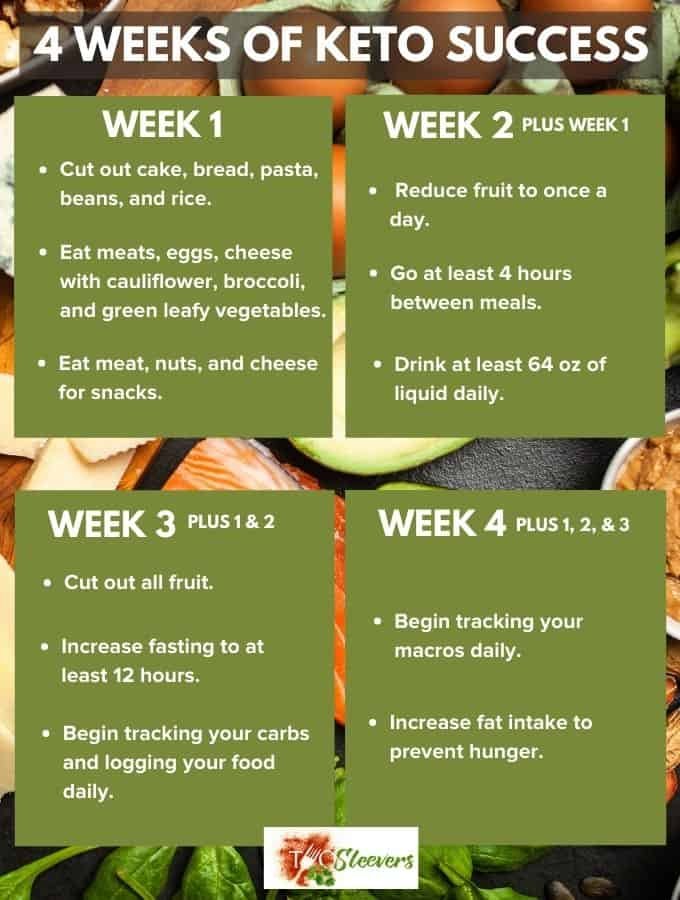
This image is property of twosleevers.com.

